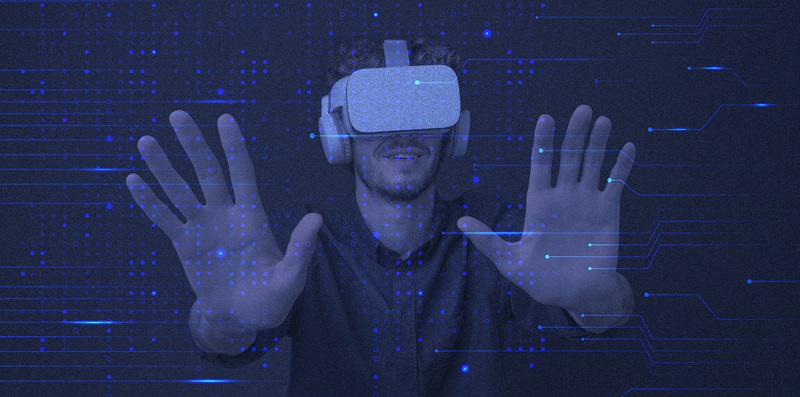The world of immersive hardware is on the brink of a revolution. With advancements in technology and increasing consumer demand, we find ourselves at a pivotal moment where immersive experiences are poised to transform our lives. In this article, we will explore the upcoming developments in this field, including the highly anticipated launch of Apple’s Vision Pro and the integration of virtual and augmented realities (VR and AR) through mixed reality.
The Game-Changer: Apple’s Vision Pro Set to Launch in February
In 2023, the Meta Quest 3 made waves in the industry, but the real game-changer is set to arrive this year. Apple is gearing up to launch its much-anticipated spatial computer, the Vision Pro, in February. The Vision Pro promises to take immersive experiences to a whole new level with its cutting-edge technology and sleek design. As we await its release, the industry is buzzing with excitement and anticipation.
Mixed Reality: Revitalizing the Market
Mixed reality, the integration of VR and AR, is poised to revitalize the gradually growing market of immersive hardware. By combining the best of both worlds, mixed reality offers users a truly immersive and interactive experience. Imagine being able to overlay virtual objects onto the real world or explore virtual environments with the freedom of movement. This convergence of virtual and augmented realities opens up endless possibilities across industries, from gaming and entertainment to education and training.
Wider Adoption: Accessibility and Broadening Range of Applications
As the cost of immersive hardware becomes more accessible and the range of applications broadens, wider adoption is inevitable. In the past, these technologies were primarily reserved for tech enthusiasts and early adopters. However, with advancements in manufacturing processes and increasing competition, prices have become more affordable. Additionally, the expanding range of applications, from gaming and entertainment to healthcare and engineering, makes immersive experiences more appealing to a broader audience.
Future of Immersive Hardware: Successors to Meta Quest 3 and Apple Vision Pro in 2024
While we eagerly anticipate the release of Apple’s Vision Pro, the year 2024 will offer a glimpse into the future of immersive hardware. As technology continues to evolve, we can expect to learn more about the successors to the Meta Quest 3 and the Vision Pro. These future iterations will likely focus on further enhancing the user experience, with advancements such as eye-tracking and increased resolution. The quest for innovation never stops, and companies will continue to push the boundaries of what immersive hardware can achieve.
Quest 4: Eye-Tracking and Resolution to Match Apple’s Standards
As the immersive hardware landscape evolves, competitors will strive to match Apple’s standards. With the Vision Pro setting a new benchmark, the focus for the next generation of Meta Quest, Quest 4, will likely be on incorporating eye-tracking technology and improving resolution. By tracking users’ eye movements, Quest 4 can provide a more natural and intuitive experience, enabling users to interact with and control their virtual environments effortlessly. Improved resolution will further enhance visual fidelity, making the virtual world more lifelike than ever before.
Advancements in AI and Wearable Tech: Introduction of Multi-Modal Large Language Models (LLMs)
Over a decade ago, wearable tech started making waves by putting sensors on our bodies. Now, it’s about to get even more interesting thanks to advancements in AI. The game-changer here is something called multi-modal large language models (LLMs) – advanced AIs that can understand and create text, images, sounds, and maybe even videos. These LLMs have the potential to revolutionize how we interact with immersive hardware and virtual environments.
Wearable devices, such as smart glasses, play a crucial role in the evolution of AI systems. They provide these AI systems with ‘eyes’ and ‘ears’ in the form of cameras and microphones, allowing them to perceive and understand the world around them. The integration of AI-powered wearables with immersive hardware enables seamless interactions with virtual objects and provides users with personalized and contextually relevant information. This integration opens up exciting possibilities for applications in areas such as augmented reality gaming, contextual assistance, and immersive simulations.
AI-Powered Wearables: Advancements from OpenAI, Anthropic, and Virtual Assistants
This year, we can expect to see more AI-powered wearables utilizing advanced AI technologies from the likes of OpenAI, Anthropic, and even smarter versions of our most familiar virtual assistants – Alexa, Google Assistant, and Siri. These advancements will enhance the capabilities of wearable devices, enabling them to understand natural language, recognize objects and gestures, and offer personalized recommendations based on user preferences. The potential impact of AI-powered wearables on immersive experiences is immense, bringing us closer to a world where technology seamlessly integrates with our daily lives.
In conclusion, we are at a pivotal moment for immersive hardware. With the upcoming launch of Apple’s Vision Pro and the continuous advancements in AI-powered wearables, the future looks incredibly promising. Mixed reality has the potential to transform industries and revolutionize the way we interact with our surroundings. As these technologies become more accessible and the range of applications expands, immersive experiences will become an integral part of our everyday lives. Buckle up, because the future of immersive hardware is about to take us on an extraordinary journey.

